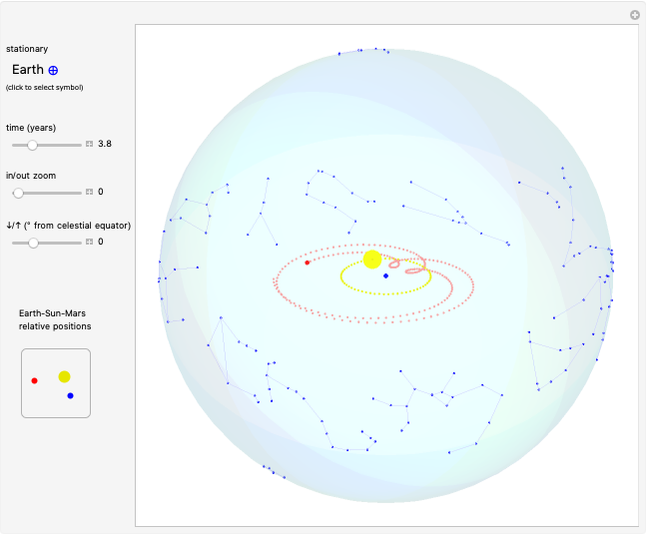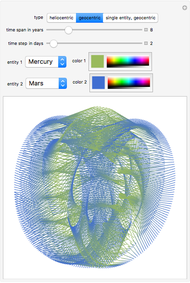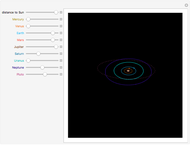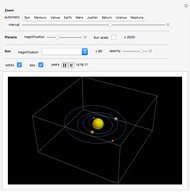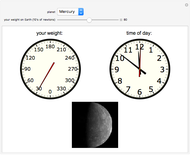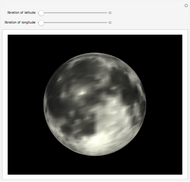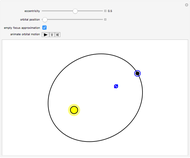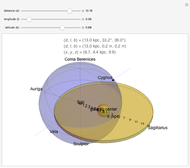Galactic Coordinate System

Requires a Wolfram Notebook System
Interact on desktop, mobile and cloud with the free Wolfram Player or other Wolfram Language products.
The galactic coordinate system is based on spherical coordinates centered at the Sun and oriented towards the galactic center. The whole of the galaxy serves as a reference plane with Coma Berenices as the north galactic pole. A different system, the ecliptic coordinate system, uses the solar system as the reference plane and Draco as the north ecliptic pole. The axial tilt of the solar system to the galaxy is about 30°. In contrast, the axial tilt of the Earth compared to the solar system is about 23.4°.
[more]
Contributed by: Margot Brouwer (November 2012)
(based on a program by Jeff Bryant)
Open content licensed under CC BY-NC-SA
Snapshots
Details
Permanent Citation












